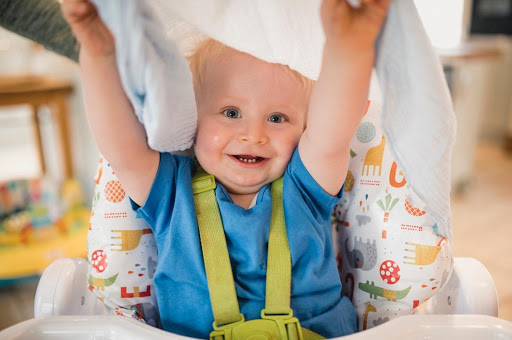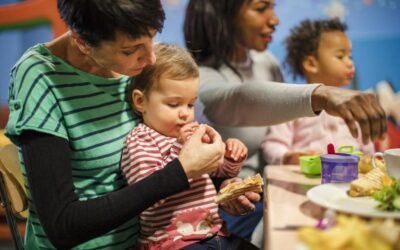Social and emotional skills are an integral part of developmental growth, beginning in infancy
The experiences children have early in life have an enormous impact on their future development. Raising a child to reach their maximum potential is like building a cathedral, and although laying the initial groundwork and constructing the foundation may not be the most glamorous or outwardly impressive part of the work, it is absolutely essential to their eventual capacity, strength, and endurance.
Early childhood is a crucial time for learning how to react to stress, make friends, handle conflict, care for others, wait patiently, and follow the rules. Mastering these concepts early in life paves the way to personal success and happiness throughout adulthood, making social and emotional development a vital part of early childhood education. It’s never too soon to start practicing skills that will contribute to ongoing social and emotional literacy.
Defining social and emotional development
Social and emotional development begins at birth and includes many areas of growth. Although many of the building blocks involved with developing these traits in infancy seem like a natural part of the nurturing process, understanding the importance of encouraging these behaviors is a key component of being a skilled caregiver.
Four of the main areas of growth in social and emotional development include:
- Temperament: The ability of a young child to adjust and respond to a variety of situations, caregivers, and strangers.
- Attachment: The ability to develop a connection or emotional bond between child and caregiver.
- Social skills: The ability to get along with peers and other people.
- Emotional regulation: The ability to control reactions and emotions in a variety of environments or situations.
Mastering the growth areas listed above can contribute to emotional security in infancy that will lead to increased confidence throughout life.
The importance of social and emotional development
A child experiences incredible growth in all areas of development within the first three years of life. More than a million neural connections are created each second, based on relationships, experiences, and environment. At birth, a baby’s brain weighs approximately three-quarters of a pound, which is about 25 percent of its adult weight; by age three, it has grown to approximately 80 percent. A stimulating environment supports and encourages this rapid growth.
Young children draw on their direct physical, sensory, and social experiences to develop an understanding of the world around them:
- They develop competence and appropriate social interactions by experiencing social contexts
- They gain knowledge about the world through child-initiated play supported by teachers
- They learn to think and solve problems as they play with people, materials, and ideas
- They develop communication skills as they interact with peers and adults who talk and play with them
Supportive experiences, interactions, and play are all core components of social and emotional development.
Encouraging social and emotional development
Part of your caregiving plan should include activities designed to provide opportunities that will facilitate the development of social and emotional growth. Use attentive and responsive methods to help children acquire skills in:
- Developing positive relationships with people of various ages
- Learning about the self and how to manage one’s emotions and behavior
- Create opportunities to practice nurturing behavior and care for other living things
- Model appropriate social-emotional responses and help moderate those in a child
Milestones of appropriate social and emotional development in children under three include:
Birth to three months
- The ability to be comforted by a familiar caregiver
- Smiling and/or expressing pleasure to social interactions
Three to six months
- Initiating social interactions, such as smiling
- Participating in play, such as peek-a-boo
Six to nine months
- Show a wider range of emotions
- Distinguish between friends and strangers
Nine to twelve months
- Show anxiety when apart from primary caregiver
- Imitate certain actions
One to two years
- Show pride about certain accomplishments
- Demonstrate a sense of self through assertiveness and making requests
Two to three years
- Show awareness of their feelings and experience sympathy for others
- Develop ideas about self-worth such as being good or bad
Keep these benchmarks in mind while developing your caregiver routine or curriculum and incorporate activities that contribute to age-appropriate growth.
It’s true that social and development occurs whether it’s thoughtfully structured or not; however, strategically designing a caregiving program that nurtures that area of child development can result in an increased sense of self image, adaptability, problem-solving, and social competency. Creating powerful positive connections during infancy can build a solid foundation that will support a lifetime of growth.
The VA Infant & Toddler Network helps improve the quality of care for infants and toddlers through extensive resources, services, and education for caregivers. Learn more about how we can help you improve the standard of care.




